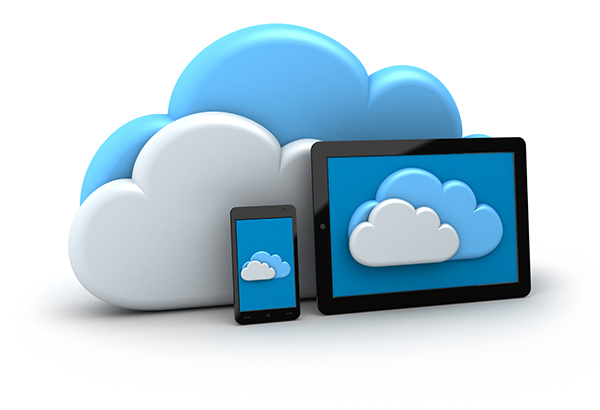 Working the IT department at large corporations can be tiresome. It’s not enough to keep tabs on all the hardware; you also have to make sure that the software is installed on all the systems. Whenever a new hire comes in, you have to spend more money to buy the software again, or check to make sure the license allows for yet another user.
Working the IT department at large corporations can be tiresome. It’s not enough to keep tabs on all the hardware; you also have to make sure that the software is installed on all the systems. Whenever a new hire comes in, you have to spend more money to buy the software again, or check to make sure the license allows for yet another user.
If this sounds familiar then cloud computing could be the solution for you. In this article, we’ll dive into cloud computing to help you get a better understanding of this service and how it can make your life easier.
What is cloud computing?
Imagine one mega-computer that hosts all the software tools that your company needs. This mega-computer has thousands of wires connecting it with thousands of smaller computers, feeding them all the information without there having to be anything on the small computers themselves. Whenever you want to add new software, all you have to do is install it into the mega-computer and it will automatically be accessible from any smaller computer.
In the most basic terms, this is what cloud computing is (minus the wires). It means that all the applications are installed on a remote machine and you can access them via web-based programs. This means two things:
- Since the software is stored on the computer cloud (the “mega-computer”), your local computers no longer have to worry about the extra hardware and software load;
- When installing new programs, you only have to install it on the cloud computer, and everybody at the company can automatically access it!
How does it work?
There are two primary components to cloud computing: the front end and the back end. They’re connected through a network, usually the Internet.
1. The Front End
The front end is the smaller computer in our metaphor above. This is what the user sees. It’s the network of company computers and the user interface required to access the cloud computer’s information.
Let’s take a second to talk about user interfaces before we continue. If you have an email account that you access through web-based email programs like Gmail or Hotmail, then you’ve experienced cloud computing. Your account information and all your emails are stored on a remote machine, which you can access via the Internet. The user interface that you use to access this information is a web browser like Safari, Firefox, or Chrome. To make things easier for users, Gmail and Hotmail leverage already existing browsers as interfaces.
But this isn’t always the case. Some systems require unique applications that provide network access. These unique applications offer more in the way of security but you need to make sure that the interface is available on all your computers.
2. The Back End
The back end is essentially the mega-computer, which is a web of various computers, servers, and data storage systems. This is what is called the “cloud computing system”, and you can install practically any program on it. There is a central server that administers the entire web and makes sure that everything is running smoothly, and middleware that allows networked computers to communicate with each other.
Cloud computing systems usually require storage devices at least twice as big as the clients’ information. This is because they create back-ups of the information in case a storage device broke down. The extra copies ensure that the central server can still access the information, which would otherwise be unreachable. Making back-up copies of the information is called redundancy.
How do I know if I need it?
If you meet any of the criteria below, then cloud computing is the solution for you:
- I have a lot of software that takes up space and need a lot of processing power to run. Cloud computing handles the heavy lifting that programs often require. You don’t have to worry about how big the memory is or how fast the processing needs to be. All you have to make sure of is that it is enough to run the middleware.
- My company relies on certain software to get work done. Cloud computing makes sure that this software is always available on all computers. It also makes sure that whenever the software updates, it will update everywhere.
- We have local servers and storage devices that take up a lot of physical space. If these devices are taking up a lot of space, so much so that you need to rent new facilities to house them, then maybe it’s time to consider giving them up and letting someone else do the storage for you.
- I have a lot of information that I need to access on several computers. Since you’re not storing the information locally, you can access it anytime, anywhere, as long as that computer is in the middleware network.
Catch our next article to take a closer look at the different cloud computing models available to see which is the right fit for you.
If you are still hazy about some details or unsure of whether your situation requires a cloud computing solution or not, leave a comment below and we’ll help you as best as we can.
{{cta(’35f3e6a4-addc-4538-b9d9-fc6e80c42539′)}}



